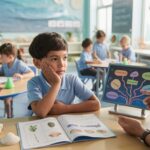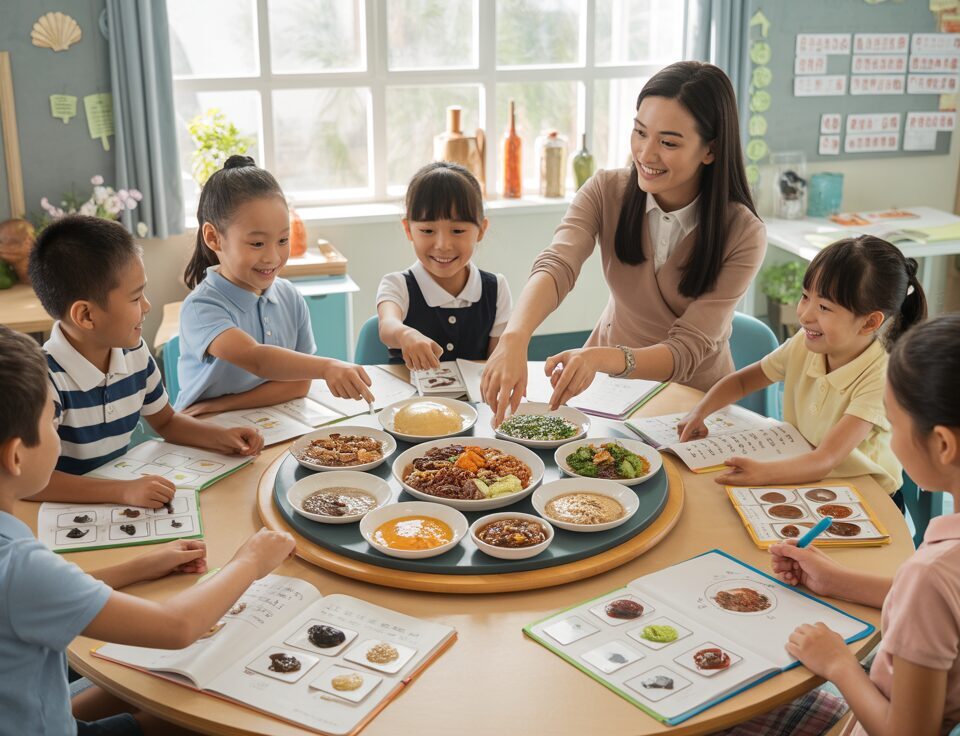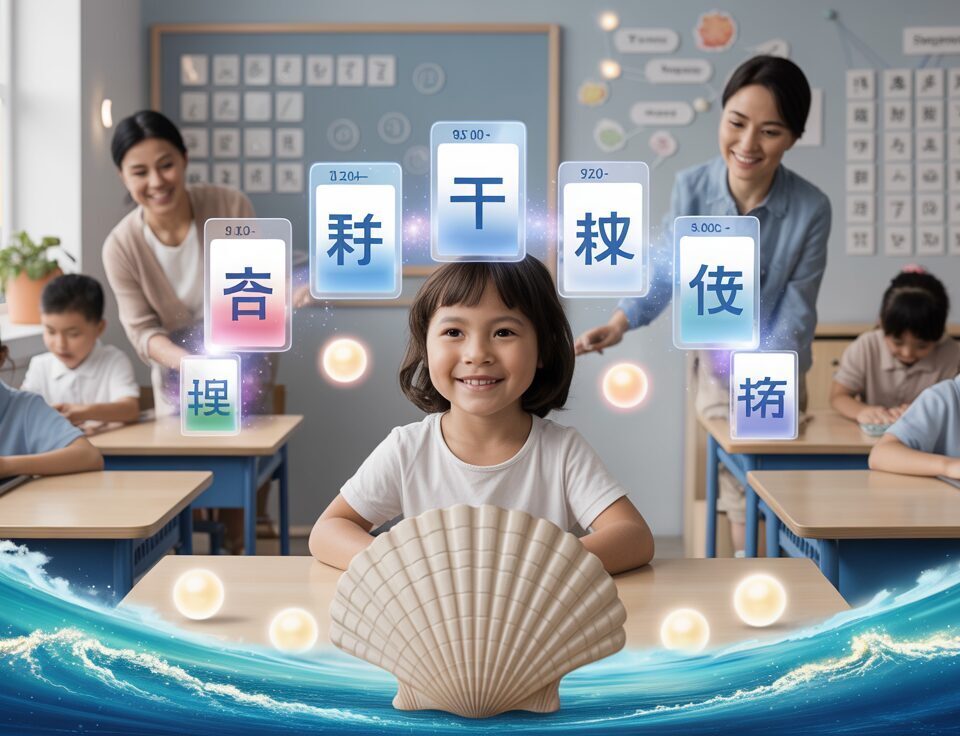
PSLE Science Answering Techniques: Mastering Open-Ended Questions
October 26, 2025
Case Study: How Inquiry-Based Learning Significantly Boosts Science Achievement Levels
October 30, 2025Table Of Contents
- Understanding Density in Primary School Science
- The Importance of Hands-on Learning for Science Mastery
- Kitchen Density Experiment #1: The Layered Liquid Rainbow
- Kitchen Density Experiment #2: Sink or Float Predictions
- Kitchen Density Experiment #3: The Mystery of the Dancing Raisin
- Kitchen Density Experiment #4: Egg Density Investigation
- Connecting These Experiments to PSLE Science Requirements
- Beyond Experiments: Developing Scientific Thinking
Have you ever watched your child’s eyes light up when they discover something new through their own exploration? That spark of curiosity and achievement is precisely what we nurture at Seashell Academy by Suntown Education Centre. While textbooks provide essential information, we believe that true understanding—especially in subjects like Science—comes from hands-on experiences that connect abstract concepts to the real world.
Density is one of those fundamental science concepts that appears throughout the primary school curriculum and in PSLE Science. Yet many students struggle to fully grasp it when learning from textbooks alone. The good news? Your kitchen is actually a perfect laboratory for exploring density in ways that are both educational and engaging.
In this article, we’ll guide you through simple yet fascinating density experiments you can conduct with your child using everyday kitchen items. These activities not only reinforce scientific concepts but also develop critical thinking skills, encourage curiosity, and make learning a joyful experience—values that align perfectly with our Seashell Method of education.
Understanding Density in Primary School Science
Before we dive into experiments, let’s clarify what density actually means in terms your child can understand. Simply put, density is a measure of how tightly packed the matter in an object or substance is. We can express it as a relationship between mass and volume, or more simply: how heavy something is for its size.
In the Primary School Science curriculum, students encounter density concepts as early as Primary 3 when learning about materials and their properties. By Primary 5 and 6, they explore more complex relationships between density and floating/sinking, and how heating affects the density of liquids and gases. Understanding these concepts is crucial for success in the PSLE Science examination.
The challenge for many students is that density isn’t something they can directly see. This is where hands-on experiments become invaluable—they transform an abstract concept into a concrete, observable phenomenon.
The Importance of Hands-on Learning for Science Mastery
At Seashell Academy, we’ve observed that students who engage with scientific concepts through practical experiments develop a deeper, more intuitive understanding than those who only study theory. This aligns with our Programme Philosophy, which emphasizes learning through exploration and discovery rather than rote memorization.
Hands-on experiments offer multiple benefits for young learners:
- They create memorable learning experiences that form stronger neural connections
- They allow children to observe cause-and-effect relationships firsthand
- They develop critical thinking and problem-solving skills as students predict, observe, and explain results
- They make learning enjoyable, fostering a positive attitude toward science
- They build confidence as children successfully conduct experiments and understand the results
These benefits are especially important when learning about density—a concept that requires students to understand the relationship between two other concepts (mass and volume). Now, let’s transform your kitchen into a science laboratory!
Kitchen Density Experiment #1: The Layered Liquid Rainbow
What You’ll Need:
A tall, clear glass or cylinder
Honey
Dish soap (preferably colorful)
Water
Vegetable oil
Rubbing alcohol
Food coloring (different colors)
Small objects like a grape, coin, small toy, cork, and paper clip
How To Do It:
Start by pouring honey into the bottom of your glass—this is your densest liquid.
Gently add dish soap as your next layer.
Mix water with blue food coloring and carefully pour it down the side of the glass to form the third layer.
Add the vegetable oil for the fourth layer.
Mix rubbing alcohol with red food coloring and carefully add it as your top layer.
The Science Behind It:
This experiment creates a stunning visual demonstration of density differences among liquids. The honey, with a density of about 1.4 g/ml, sinks to the bottom, while the rubbing alcohol, with a density of about 0.8 g/ml, floats at the top. The liquids arrange themselves in order of decreasing density from bottom to top.
For an added dimension to the experiment, carefully drop the small objects into your density column. Ask your child to predict where each object will settle, and then observe what happens. Each object will sink until it reaches a liquid layer with a density less than its own—at which point it will float on that layer. This provides a vivid illustration of relative densities.
This experiment links directly to the Primary 5 Science topic on materials, specifically the properties of matter and density relationships.
Kitchen Density Experiment #2: Sink or Float Predictions
What You’ll Need:
A large clear bowl filled with water
Various household objects such as:
– A small apple
– A grape
– A potato chunk
– A carrot piece
– An egg
– A bottle cap
– A metal spoon
– A rubber band
– A plastic toy
A notepad for recording predictions and results
How To Do It:
Before placing any objects in water, ask your child to predict whether each one will sink or float, and record these predictions.
One by one, place each object in the water and observe what happens.
Record the results next to your predictions.
Discuss why some objects floated while others sank.
The Science Behind It:
This experiment demonstrates the fundamental principle that objects with a density greater than water will sink, while those with a density less than water will float. Water has a density of 1 g/ml, which becomes our reference point. Objects like apples (density approximately 0.9 g/ml) will float, while potatoes (density approximately 1.1 g/ml) will sink.
What makes this experiment particularly valuable is having your child make predictions before testing. This engages critical thinking skills and helps them begin to intuitively understand density relationships. After testing, discuss any surprising results and encourage your child to figure out why their predictions might have been incorrect.
This activity directly supports the Primary 3 and 4 Science topics on materials and their properties, setting a foundation for the more advanced density concepts in Primary 5 and 6.
Kitchen Density Experiment #3: The Mystery of the Dancing Raisin
What You’ll Need:
A clear glass
Carbonated water (soda water)
Raisins
Regular tap water (for comparison)
How To Do It:
Fill one glass with tap water and another with carbonated water.
Drop a few raisins into each glass.
Observe what happens in both glasses over several minutes.
The Science Behind It:
In the regular water, the raisins will likely sink to the bottom and stay there. But in the carbonated water, something magical seems to happen—the raisins begin to “dance,” moving up and down repeatedly. This delightful experiment introduces the concept of changing density in a dynamic system.
Here’s what’s happening: Raisins have a density slightly greater than water, so they initially sink. The carbonation in soda water consists of carbon dioxide bubbles. These bubbles attach to the wrinkled surface of the raisins, effectively making the raisin-plus-bubbles combination less dense than water—causing them to rise. Once they reach the surface, the bubbles pop, releasing the carbon dioxide. Without these bubbles, the raisins become denser than water again and sink back down. The cycle repeats as new bubbles form and attach to the raisins.
This experiment beautifully demonstrates how density can change based on circumstances and introduces concepts from the Primary 6 Science topic on changes in matter, particularly how gases affect the apparent density of objects.
Kitchen Density Experiment #4: Egg Density Investigation
What You’ll Need:
Two transparent glasses
Two raw eggs
Water
Salt
A spoon for stirring
How To Do It:
Fill both glasses with the same amount of water.
In one glass, add about 6 tablespoons of salt and stir until dissolved.
Carefully place one egg in each glass and observe what happens.
The Science Behind It:
This experiment demonstrates how the density of a liquid can be changed, affecting whether an object sinks or floats. In the regular water, the egg will sink because its density (approximately 1.03 g/ml) is slightly greater than that of fresh water (1 g/ml). However, adding salt increases the water’s density. When enough salt is dissolved, the saltwater solution becomes denser than the egg, causing the egg to float.
For an extension of this experiment, try gradually adding salt to the fresh water with the sunken egg, a little at a time, and observe at what point the egg begins to rise and eventually float. This adds a quantitative dimension to the experiment and can lead to discussions about concentration and its effect on density.
This experiment connects directly to the Primary 5 Science topic on mixtures and solutions, as well as the broader concept of density in the PSLE Science syllabus.
Connecting These Experiments to PSLE Science Requirements
The experiments we’ve explored don’t just provide fun activities—they build understanding of key concepts that appear in the PSLE Science examination. At Seashell Academy, we emphasize making these connections explicit so students understand how their hands-on experiences relate to curriculum requirements.
For density topics, PSLE Science questions often focus on:
- Predicting whether objects will sink or float based on density comparisons
- Understanding how heating and cooling affect the density of liquids and gases
- Explaining everyday phenomena using density concepts (like hot air balloons rising or icebergs floating)
- Interpreting experimental results related to density
Our Mathematics Programme at Seashell Academy complements these science concepts by helping students work comfortably with the mathematical aspects of density (mass ÷ volume). This integrated approach ensures students can handle both the conceptual and computational elements of density questions in their examinations.
Beyond Experiments: Developing Scientific Thinking
While conducting these kitchen experiments, consider using the following strategies to maximize their educational value:
Encourage your child to keep a simple science journal where they record:
- Their predictions before each experiment
- Their observations during the experiment
- Their conclusions after completing the experiment
- Any questions that arose from the activity
Ask open-ended questions that stimulate deeper thinking:
- “What do you think might happen if we used warm water instead of cold?”
- “How could we modify this experiment to test a different property?”
- “Can you think of examples in everyday life where density matters?”
This approach mirrors the teaching methods we use in our P4 Chinese Programme, P5 Chinese Programme, and P6 Chinese Programme at Seashell Academy—encouraging students to think critically and make connections across different subjects and to real-life applications.
By exploring density through these hands-on kitchen experiments, your child will develop not just the scientific knowledge needed for PSLE success, but also the curiosity, critical thinking skills, and confidence that characterize lifelong learners. These qualities exemplify the holistic development we nurture at Seashell Academy by Suntown Education Centre.
Nurturing Scientific Minds Through Kitchen Exploration
The kitchen experiments we’ve shared transform abstract density concepts into tangible, observable phenomena that children can understand and remember. This hands-on approach to learning science aligns perfectly with the Seashell Method we practice at Seashell Academy by Suntown Education Centre—where we believe that true understanding comes through experience and discovery, not just textbook memorization.
These density experiments offer more than just preparation for exams—they nurture your child’s natural curiosity, develop critical thinking skills, and build confidence in their ability to understand the world around them. When children see science as accessible and engaging rather than intimidating, they’re more likely to develop a genuine interest in STEM subjects that could shape their future academic and career choices.
Remember that learning is most effective when it’s enjoyable. The delight your child experiences when watching liquids form perfect layers or raisins dance in carbonated water creates positive associations with learning science. These positive emotions enhance memory formation and motivation—key factors for long-term academic success.
At Seashell Academy, we believe that every child has the potential to excel academically while maintaining the joy of learning. Our approach balances rigorous academic preparation with emotional well-being and genuine engagement—creating resilient, confident learners who are well-prepared not just for PSLE success, but for a lifetime of learning and growth.
Would you like to learn more about how Seashell Academy by Suntown Education Centre can support your child’s scientific understanding and overall academic development? We invite you to contact us to discover how our unique Seashell Method can nurture your child’s full potential through small-group classes led by experienced educators who are passionate about making learning meaningful and enjoyable.





